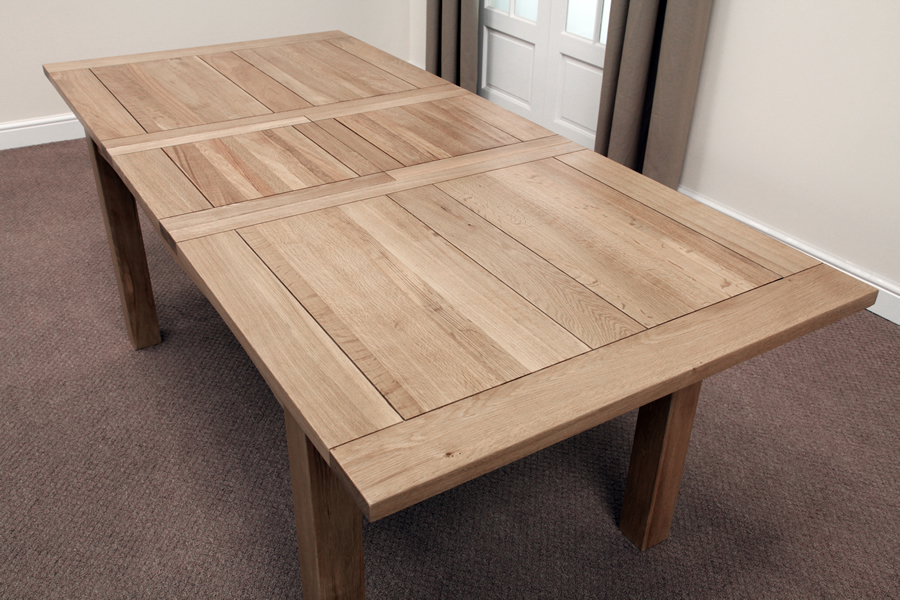jeffff":3oy77zhh said:
Ultimately we need a table now and I can't spend upwards of £500 on one. I would be keen to look at ebay (and have been), but there is a lack of light, proper wood, extending tables available... so I'm being pressed to a decision one way or another.
At the very least, it's probably worth looking around a bit more. The table we have was arguably cheaper than the one you linked to (albeit at a higher price, in a bundle with some chairs which are pretty nice) and unlike the one you linked to, is predominantly made from single pieces of timber of similar hue and grain, only the legs are laminated together.
The only notable flaw ours had was that it wobbled a bit when we first got it, thanks to the bolted-together construction... and this was largely because in a phenomenal display of bizarre penny-pinching, the people who made it had failed to put big flat washers and springs behind the nuts holding the legs on, so they couldn't be tightened without biting into the wood. Thankfully my sinking feeling upon first taking delivery was remedied by something like £1's worth of hardware!
jeffff":3oy77zhh said:
Peter - what is the significance of the apron rails not being "over deep"? Is a big apron a sign of a poorly made table?
Regardless of whether it's a sign of being poorly made, it's a harbinger of sore knees.

jeffff":3oy77zhh said:
How does a table like this take sanding? If it gets gouged and wrecked on top, can it be refinished? Or is this sort of construction not suited to that?
From my point of view, buying a hardwood table was at least in part an effort to avoid getting a gouged and wrecked surface!
It probably depends as much on the table as anything, but certainly with ours it's
thick enough to be sanded quite a bit without failing structurally. But then, any solid-wood table should be, presuming it's actually solid wood and not veneered or something.
I suspect that the problems you'd have with sanding are twofold:
- Because of the frame-and-panel construction, with a bevel around the edge of the frame, you'll need to be more even and level with your sanding than you could get away with on a traditionally-jointed table; the bevels will show variations in thickness that the eye probably wouldn't otherwise be able to perceive.
- You'll probably have trouble removing the finish from the inside of the bevel, so re-finishing it after the sanding will be more difficult than it might otherwise be
jeffff":3oy77zhh said:
And (this might be a simple question), how are these "off cut" sections of wood all joined together? Glue? Or jointed somehow? The ad states "no biscuit joints" which I presume refers to the fact that the top is planked, rather than having that kitchen top look... but what about the legs?
My expectation would be that they'll simply be glued together - either flat butt joints or possibly with a profile cut into them to lock them in place as they're glued, like tongue-and-groove flooring. But probably just glued flat, 'cause like that you get more wood from your offcuts! ;-)


































